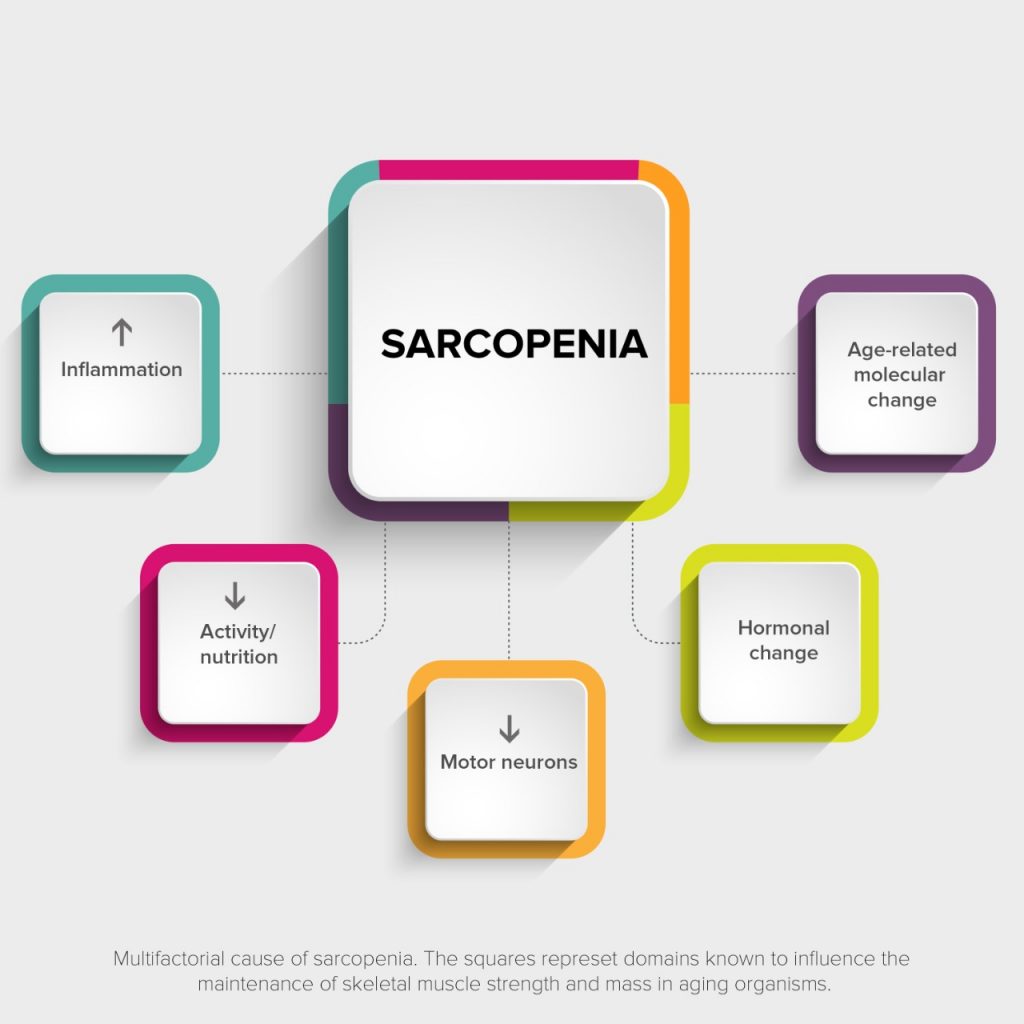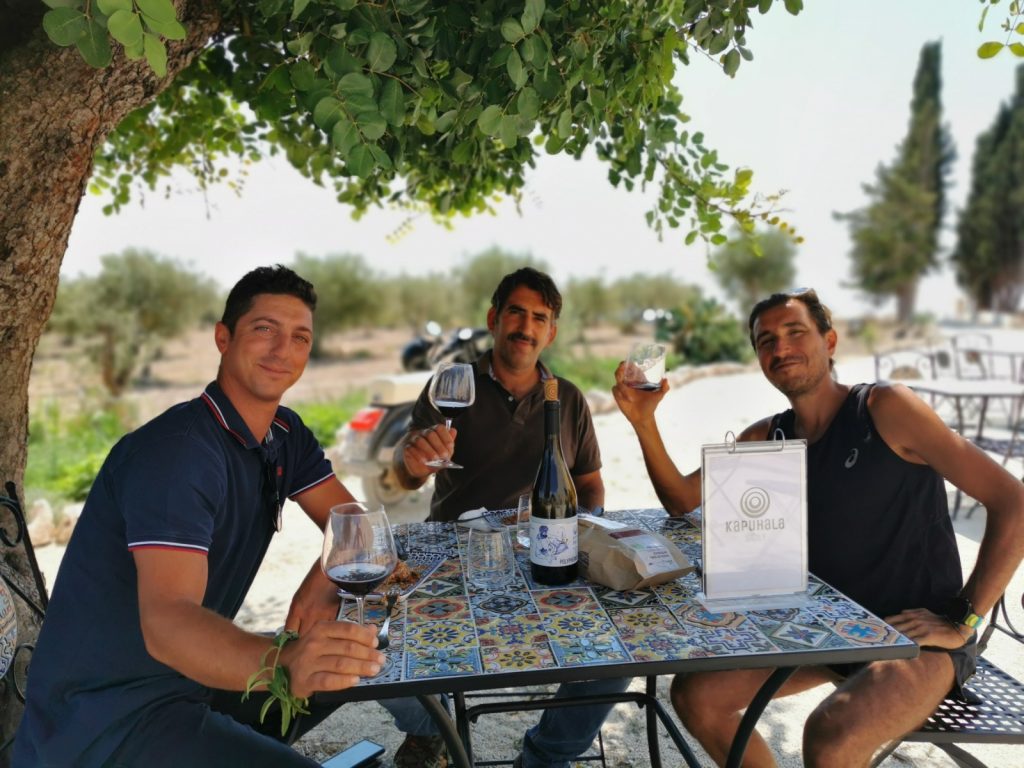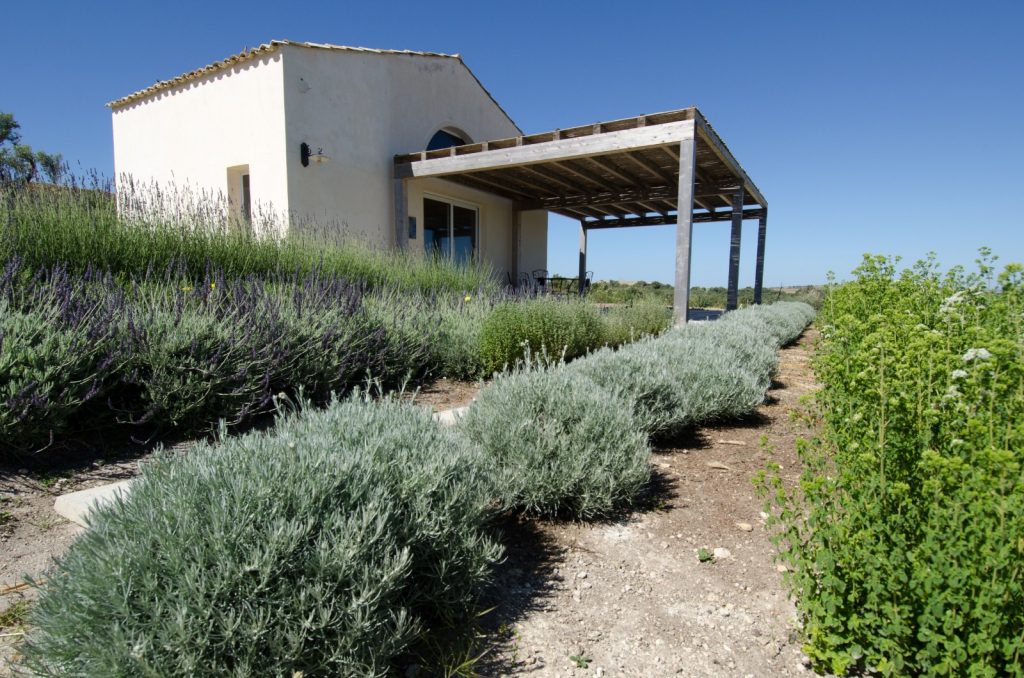
Sarcopenia, The Silent Enemy Of Your Old-Self
In a progressively aging population sarcopenia is set to become a major topic of interest among the medical community, a global health concern for the governments, and a strong source of motivation for a healthy lifestyle, particularly to the elderly, who are most at risk.
Defined as an age-related loss of muscle mass and strength (Greek, Sarx for “flesh” and Penia for “loss”), this condition starts manifesting itself as early as the 5th decade of life, producing a linear loss of muscles which can result in up to 50% loss by the 8th decade of life. The result is a decreasing ability to perform every task that is muscle-powered such as lifting objects, standing up, or walking, thus increasing the risk of injury especially related to the loss of balance and fall. It affects men and women of all ethnicities, often manifesting in association with other conditions either acute or chronic, as well as often promoting inflammation. Obesity and fat infiltration into skeletal muscle are also considered to be important factors of sarcopenia.

Because of its impact on the elderly population in an aging world, sarcopenia is attracting a lot of interest and efforts to improve diagnostic tools and ultimately the treatment, which currently is largely relegated to nutritional adjustments and exercise. While drugs might be developed in the years to come (no drugs are currently approved for sarcopenia treatment), today a well-planned and mindful lifestyle is the key to maintaining a good quality of life that allows for a naturally enjoyable aging process.
Even though aging is a key condition for sarcopenia to manifest, and evolutionary or genetic factors could play a role in determining its presence or severity, the degree to which people are impacted by sarcopenia varies depending on certain, more controllable factors: – EXERCISE: the density and amount of muscle fibers begin to decline rapidly starting at around 50 years of age. For those whose lifestyle was and remains more sedentary this process of degeneration is more obvious. Regular exercise, on the other hand, especially resistance training can considerably slow down the loss of muscle mass and strength. Moreover, resistance training is responsible for the preservation of the motor cells, which control the transmission of signals between the brain and muscles.
– HORMONE IMBALANCES: with aging some hormones such as growth hormone, testosterone, thyroid, and insulin-like growth factor, are produced in lesser quantities and concentration, affecting the size and strength of our muscles.
– PROTEIN SYNTHESIS: as we age, our ability to synthesize protein, especially when paired with a calorie and protein unbalanced diet, is compromised, further adding to the loss of muscle and strength associated with sarcopenia.
Diagnosing sarcopenia requires objective measurements related to muscle strength and mass. Walking speed, calf circumference, bio-impedance analysis, handgrip strength, dual-energy X-ray absorptiometry among others have been used to provide certain objectivity in diagnosing this condition as well as quantifying it. Unfortunately, they all seemed inadequate in providing the level of sensitivity or accuracy required. In most cases, sarcopenia is self-reported by the subjects experiencing it, often in association with impaired abilities to perform daily tasks, disability, loss of independence.
PREVENTING THE PROBLEM
While early recognition and intervention are important steps in fighting sarcopenia, the best possible strategy is to use exercise as a powerful prevention tool. Resistance training has so far produced the best results in slowing the development of sarcopenia, especially in conjunction with nutritional adjustments.

Resistance training and strength
Progressive resistance training exercises are recognized to be the most impactful intervention to slow or reverse the negative effects of sarcopenia.
An example of a training program, adjusted to the physical condition of the trainee, is the following
– Diagonal push-ups
– Squats with support
– Step-ups
– Standing assisted pull-ups The above sequence will train a large variety of muscle groups, while specifically increasing stability and confidence in those movements that are essential to daily life, such as sitting and standing, stepping up or down the stairs, pushing and pulling objects, or even just grip strength to hold handrails and help prevent a fall.
Aerobic training, while offering less obvious results, could be incorporated in the overall therapy as a means to support the resistance training and, in the case of overweight subjects, to help reduce excessive weight and alleviate motion impediments.
Nutrition and herbal supplements

Summary
Sarcopenia is a condition that is attracting more and more interest from the medical community. Although it lacks a comprehensive and specific definition, general consensus refers to it as a loss of muscle mass and strength, related to a variety of co-factors all linked to aging.
While the community is still engaged in looking for a pharmaceutical response to this problem, effective prevention and treatments are found in resistance training exercises and balanced nutrition.
Once again, proper lifestyle choices can support a much higher quality of life, even and especially at an older age.
Visit Kapuhala’s boutique properties in Koh Samui and Sicily and Live, Eat and Move with us. Kapuhala is uniquely suited to combat the effects of Sarcopenia through Nutrition, Exercise, and Social Living.






References:
https://www.ncbi.nlm.nih.gov/pmc/articles/PMC5127276/
https://www.ncbi.nlm.nih.gov/pmc/articles/PMC4066461/
https://www.thelancet.com/article/S0140-6736(19)31138-9/fulltext
https://www.iowaclinic.com/physical-therapy/how-to-combat-sarcopenia/
https://onlinelibrary.wiley.com/doi/10.1002/jcsm.12477

